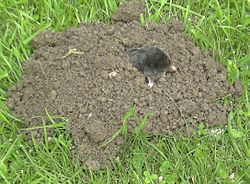Difference between revisions of "AY Honors/Animal Tracking/Answer Key/es"
(Created page with "<noinclude>") |
(Created page with "{{clear}}") |
||
| Line 255: | Line 255: | ||
{{clear}} | {{clear}} | ||
| − | |||
| − | |||
{{clear}} | {{clear}} | ||
| − | |||
| − | + | <noinclude></noinclude> | |
| − | <noinclude | ||
| − | |||
{{CloseReq}} <!-- 12d --> | {{CloseReq}} <!-- 12d --> | ||
{{ansreq|page={{#titleparts:{{PAGENAME}}|2|1}}|num=12e}} <!--T:83--> | {{ansreq|page={{#titleparts:{{PAGENAME}}|2|1}}|num=12e}} <!--T:83--> | ||
Revision as of 16:01, 24 March 2025
Nivel de destreza
1
Año
1976
Version
01.12.2025
Autoridad de aprobación
División Norteamericana
Find a place where you have seen earthworms in the past, preferably where the dirt is bare (i.e., no grass). Soak the area with water to drive the worms out of the ground. Worms need air, so when it rains (or when a Pathfinder soaks the ground with a hose), they will come to the surface. They might not come out immediately, so you should plan to return a day later to look for tracks in the mud you've made.
Moles are burrowing rodents, and if you have them in your yard, it is not difficult to see where they have been. As they tunnel along, they raise the earth above their tunnels. At the end of the tunnel you may find a hole surrounded by a "mole hill".
References
- http://www.bear-tracker.com/
- The Complete Tracker by Len McDougall, 1997. ISBN 156731-326-4
- Missouri Department of Conservation


